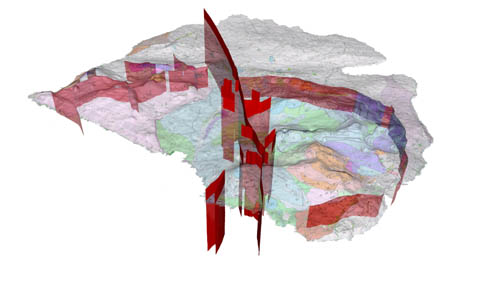A SUPERVOLCANO more than twice the height of Ben Nevis once towered over the Inner Hebrides, according to researchers.
New 3D mapping technology has revealed that the island of Rum was once a monster volcano up to 10,000ft high.
The same study has also revealed that the island still sits on a six-mile-long fissure which effectively splits Rum in two and is several kilometres deep.

This – the Loch Long Fault – was the “birthplace” of the island, through which countless millions of tons of magma poured to create a volcano that was once the size of Mount Etna.
Sixty million years of erosion by rain and wind reduced the mountain to what remains the highest point today – 2,664ft Askival.
The team, from Uppsala University, Sweden, were even able to pinpoint the location of a 500 metre wide magma chamber.
The size of the magma chamber allowed the team to estimate the size of the volcano above.
Steffi Burchardt, part of the team who carried out the study, said: “There must have been something Etna-sized on Rum – it’s eroded away now.
“It may help us understand how other volcanos in Scotland like Mull and Ardnamurchan formed.”
Borje Dahren said the volcano would have been around two or three kilometres high.
“We speculate that’s the order of magnitude we’re talking about..
“We’ve been working towards it for some time. We’re looking to get more proof.”
Using an Ordnance Survey map and other data, the software lets geologists interpret rock formations underground.
The Long Loch Fault, named after a loch which was formed by the feature, was a fissure in the earth formed when continents drifted apart millions of years ago.
This would have produced magma which cooled to form the island as well as the volcano.
Valentin Troll, part of the team who carried out the research, said: “The data shows that the fault was active a long time ago and it’s the reason Rum is there.
“It’s the birthplace of Rum.”
Ms Burchardt added: “The Long Loch fault is more complex than we thought.
This fault was active throughout history, it’s the channel the magma flowed through.”
Some of the team’s research was presented at the Volcanic and Magmatic Studies Group conference in Edinburgh this week.
The researchers will return to Rum in May to carry out further studies to understand the island’s past.